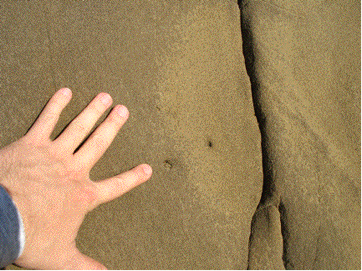Evolution
Stages of Evolution
Stage Hypothesis. Tafoni may develop in a stage-like manner along an evolutionary sequence (Boxerman, 2005). Stages are defined by width-depth and height-depth ratios as well as the shape of the opening. Pits in the rock enlarge and deepen. Gradually the pits grow into deeper and wider cavities. Eventually, the tafoni join when the spaces between them weather, erode, and disappear, thereby, transitioning the tafoni from a stage of enlargement to a stage of coalescence. Tafoni openings may reach a critical diameter at which point a cavity wall is breached, and the tafoni coalesce.
Stage Model.
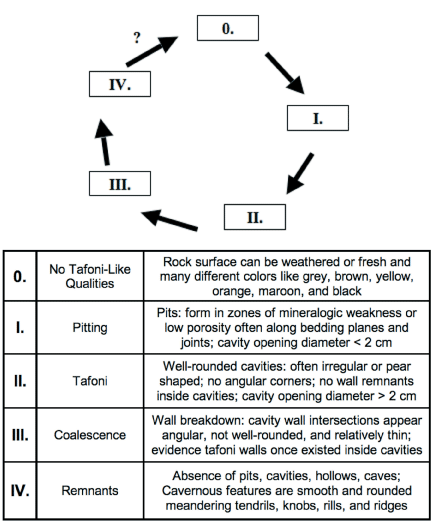
Methods. To test this stage hypothesis I made width, height, and depth measurements on a 1-meter squared outcrop of coastal tafoni, located on a cliff face at a point break along the Pacific Ocean. I assigned stages based on the shape of the opening and the walls separating the cavities.
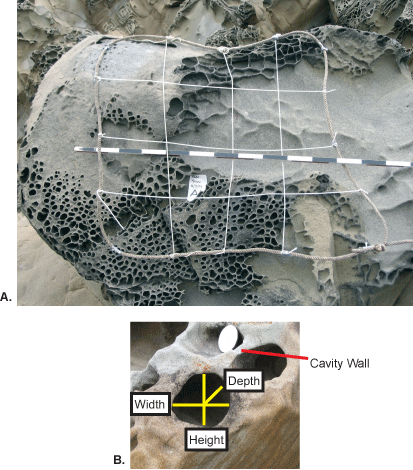
Data. Long-term visual (photographic) and morphometric data support an evolutionary sequencing of tafoni morphology. The tafoni weathering pattern can be organized into statistically meaningful groupings, or stages. Ratios of mean cavity width-depth and height-depth measurements of stage II tafoni, with groupings established by size and shape of cavity openings (but not depth), are statistically unique (Boxerman, 2005).
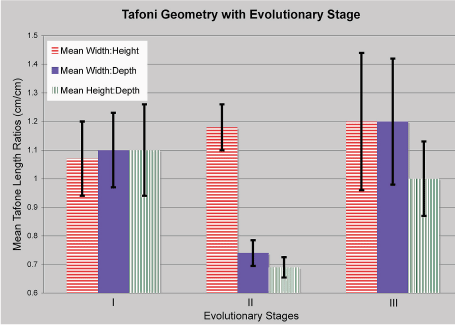
Tafoni Pattern Evolutionary Stages
Stage 0. Absence of tafoni-like qualities, including pits, cavities, hollows, tendrils, and ridges. Ripples of sand indicate that granular disintegration is actively lowering this rock.
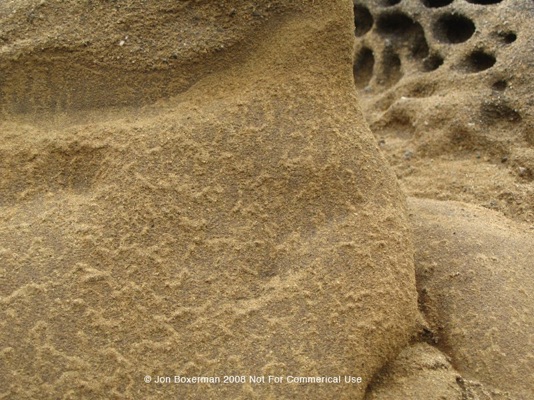
Stage I. Pits are about 2 cm in diameter or smaller. A pit probably initiates randomly, in places of higher porosity or higher permeability (e.g., around the rim of a dense calcite concretion) and in places of mineralogic and micro-topographic variation (e.g., alkali feldspars that are particularly susceptible to chemical etching, Lee & and Parson, 1995). Due to the arrangement of cleavage planes, heavily pitted areas have a honeycomb texture and may occur more often on albite-rich feldspars than on potassium-rich feldspars. It is plausible that these microscopic weathering pits serve as the nucleation sites of tafoni.

Stage II. After pits are initiated they enlarge to form caverns. By many different processes, tafoni evolve and enlarge differentially; they grow deeper than they do wider during this stage. Notice the case hardened lips that form around the openings of these coastal sandstone tafoni.
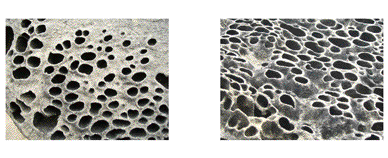
Stage III. Tafoni widen and deepen and grow larger in volume. Tafoni amalgamate gradually, grain by grain or rapidly from sudden disturbances.
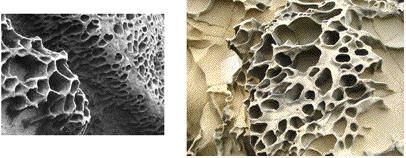
Stage IV. After tafoni walls break and the cavities converge, they leave behind intricate angular walls and meandering tendrils, relicts of their former existence. Sometimes these more resistant tendrils persist on and link with adjacent tendrils, effectively forming new, shallow enclosures. Some remnants of tafoni walls may be isolated rills and knobs. Lichen on tafoni walls may also prevent or slow erosion.
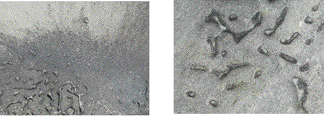
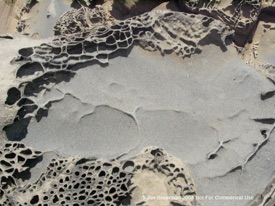
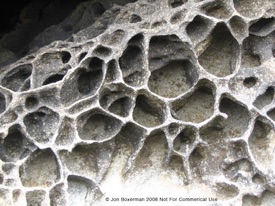
The process begins again? The controls on pit initiation are not well understood but captured on film.
